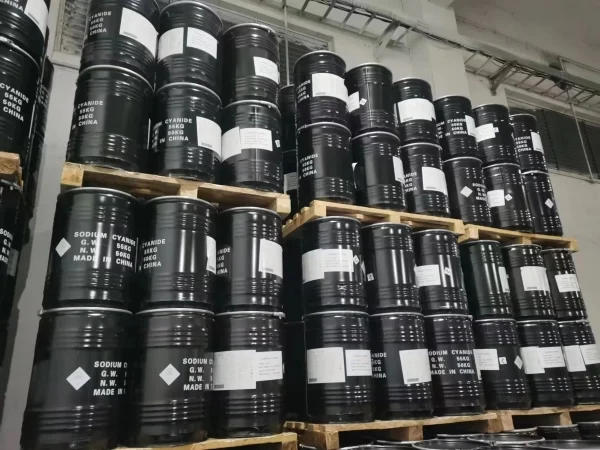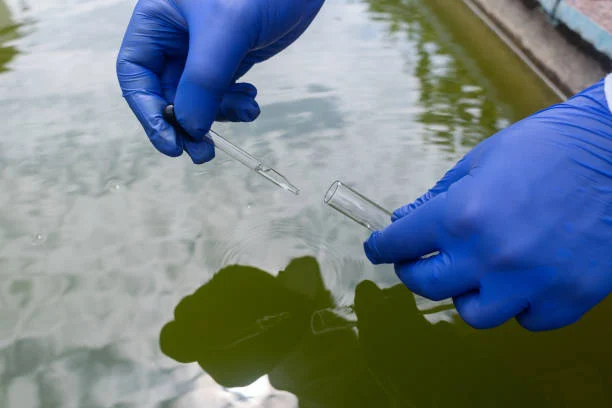
Sodium cyanide (NaCN) is a highly toxic and hazardous chemical compound. Due to its extreme toxicity and potential for environmental and safety risks, strict regulations and specific environmental conditions must be met when storing sodium cyanide. This article will explore in detail the requirements for the storage environment of Sodium Cyanide.
1. Storage Location
Isolation: Sodium cyanide should be stored in a dedicated, isolated storage area that is separate from other chemicals, especially acids, oxidizing agents, and flammable substances. This isolation helps prevent accidental reactions that could lead to the release of toxic hydrogen cyanide gas. For example, when Sodium cyanide comes into contact with acids, highly toxic and flammable hydrogen cyanide gas is produced immediately.
Restricted Access: The storage area should have restricted access, allowing only authorized personnel to enter. This helps to prevent unauthorized handling and potential accidents. Signage indicating the presence of toxic substances should be prominently displayed around the storage area.
2. Temperature Control
Cool Environment: Sodium cyanide should be stored in a cool place. High temperatures can accelerate its decomposition and increase the risk of releasing toxic gases. Generally, the storage temperature should be maintained well below 30°C. Prolonged exposure to temperatures above this threshold may cause the chemical to become more reactive and unstable.
3. Humidity Control
Dry Conditions: It is crucial to store sodium cyanide in a dry environment. Sodium cyanide is hygroscopic, meaning it can absorb moisture from the air. When it absorbs water, it may hydrolyze and produce hydrogen cyanide gas. The relative humidity in the storage area should be kept as low as possible, preferably below 60%. To achieve this, desiccants can be placed in the storage containers or the storage room can be equipped with dehumidifying equipment.
4. Ventilation
Well - Ventilated Area: The storage area for sodium cyanide must be well - ventilated. Adequate ventilation helps to prevent the accumulation of any leaked or decomposed toxic gases, such as hydrogen cyanide. In case of a small leak or slow decomposition, good ventilation can quickly dilute the harmful gases to safe levels. If necessary, local exhaust ventilation systems can be installed to specifically remove any potentially hazardous vapors from the vicinity of the storage containers.
5. Container Requirements
Sealed and Durable Containers: Sodium cyanide should be stored in tightly sealed, durable containers. The containers should be made of materials that are resistant to corrosion by sodium cyanide, such as certain types of high - density polyethylene or steel with appropriate coatings. The tight seal prevents the escape of vapors or mist into the atmosphere. For example, a container with a defective lid could allow the release of toxic sodium cyanide vapors, posing a significant risk to the surrounding environment and personnel.
Avoid Incompatible Materials: Do not store sodium cyanide in containers that have previously held substances that are incompatible with it, such as acids, salts, or water. Also, avoid packaging sodium cyanide with metals like copper, zinc, magnesium, tin, or their alloys, as these can react with sodium cyanide and cause dangerous chemical reactions.
6. Fire - Prevention Measures
Fire - Resistant Storage: The storage area should be constructed with fire - resistant materials. Although sodium cyanide itself is not combustible, when heated for a long time, it can release toxic and poisonous hydrogen cyanide gas. In case of a fire in the vicinity of the storage area, the fire - resistant construction can help prevent the spread of fire to the sodium cyanide storage and reduce the risk of a more severe chemical incident.
No Open Flames or Sparks: There should be a strict prohibition of open flames, sparks, and smoking in the storage area. Any source of ignition can pose a serious threat as it could potentially initiate a reaction that leads to the release of toxic gases if the sodium cyanide is exposed to heat.
7. Compliance with Regulations
Legal Requirements: All storage of sodium cyanide must comply with local, national, and international regulations regarding the storage of hazardous substances. These regulations often specify details such as the type of storage facilities, safety measures, and emergency response plans. For example, in many countries, storage facilities for sodium cyanide are required to have regular inspections by relevant regulatory authorities to ensure compliance with safety and environmental protection standards.
In conclusion, ensuring the proper storage environment for sodium cyanide is of utmost importance to protect human health, the environment, and prevent potential disasters. By adhering to these strict storage requirements, the risks associated with this highly toxic chemical can be effectively minimized.
- Random Content
- Hot content
- Hot review content
- Toxicity Assessment of Sodium Cyanide and Relevant Hazard Prevention Measures
- Industrial concentrated nitric acid 55%-68%
- Oxalic acid for mining 99.6%
- Colloidal emulsion explosive
- Plastic Shock Tube(VOD≧1600m/s)
- Ammonium Chloride 99.5% Mining Collector
- Ammonium Nitrate Porous Prills
- 1Discounted Sodium Cyanide (CAS: 143-33-9) for Mining - High Quality & Competitive Pricing
- 2Sodium Cyanide 98% CAS 143-33-9 gold dressing agent Essential for Mining and Chemical Industries
- 3Sodium Cyanide 98%+ CAS 143-33-9
- 4Anhydrous Oxalic acid 99.6% Industrial Grade
- 5Soda Ash Dense / Light 99.2% Sodium Carbonate Washing Soda
- 6Oxalic acid for mining 99.6%
- 7Calcium hydroxide Industrial Grade 90%
- 1Sodium Cyanide 98% CAS 143-33-9 gold dressing agent Essential for Mining and Chemical Industries
- 2High Quality 99% Purity of Cyanuric chloride ISO 9001:2005 REACH Verified Producer
- 3 High-Quality Sodium Cyanide for Leaching
- 4Powdery emulsion explosive
- 5Industry Grade Electron grade 98% Sulfuric Acid H2SO4 Sulphuric Acid Battery Acid Industrial Sulfuric Acid
- 6Colloidal emulsion explosive
- 7sodium hydrosulfide 70% flakes used Mining Industry











Online message consultation
Add comment: